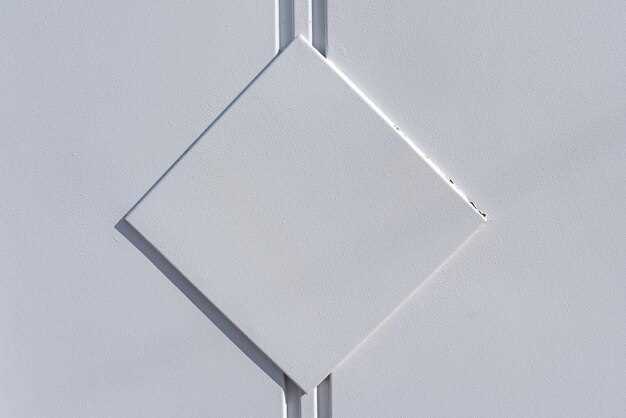
When it comes to enhancing the lifespan and aesthetics of your vehicle, selecting the right license plate frame is essential. Weatherproof plate frames not only ensure that your plates remain secure but also protect them from harsh environmental conditions. From rain to snow, UV rays to humidity, the durability of your frame directly affects its performance over time.
This article explores the top options available in the market, focusing on materials specifically engineered for outdoor resilience. Stainless steel, polycarbonate, and aluminum are among the leading choices, each offering unique features to combat the elements. Understanding these materials’ advantages will help you make an informed decision that suits both your style and your vehicle’s needs.
In addition to examining the durability of these frames, we will also consider factors such as design versatility and ease of installation. Whether you are a car enthusiast looking to upgrade or someone who wants to maintain a pristine appearance over the years, our curated list of weatherproof plate frame options will guide you in finding the perfect fit for your vehicle.
Understanding Material Types for Weather Resistance

When selecting a weatherproof plate frame, understanding the various material types is crucial for ensuring longevity and durability. Different materials offer distinct advantages and disadvantages when it comes to resisting environmental elements such as rain, snow, UV rays, and extreme temperatures.
One of the most common materials used is high-grade plastic, particularly polypropylene and ABS (Acrylonitrile Butadiene Styrene). These plastics are lightweight, resistant to moisture, and do not corrode, making them ideal for various weather conditions. They also tend to retain their color and structural integrity when exposed to sunlight, preventing fading and brittleness over time.
Aluminum is another popular choice, known for its combination of strength and resistance to rust. Aluminum frames can withstand harsh weather without deteriorating, and they are also lightweight. Many aluminum frames come with a powder-coated finish, enhancing their protective qualities and aesthetic appeal while providing an added layer of corrosion resistance.
Stainless steel is a premium option, preferred for its exceptional strength and corrosion resistance. Often used in marine applications, stainless steel frames can endure extreme environmental conditions, including saltwater exposure. Though heavier and more expensive, their durability makes them a worthwhile investment in regions with severe weather.
Finally, there are frames made from composite materials, which combine the benefits of various substances to enhance performance. These composites often include a mixture of plastic and rubber, providing excellent flexibility and impact resistance while maintaining weatherproof qualities.
In summary, the choice of material greatly impacts the performance and longevity of weatherproof plate frames. High-grade plastics, aluminum, stainless steel, and composite materials each offer unique advantages, making it essential to consider the specific environmental challenges they will face when making a selection.
Comparing Cost and Longevity of Different Frames
When selecting a weatherproof plate frame, understanding the balance between cost and longevity is essential. Different materials offer varying degrees of durability, which directly affects their overall value.
Plastic Frames are the most economical option, typically ranging from $5 to $15. While affordable, these frames may not withstand extreme weather conditions as well as others. Their longevity averages around 3 to 5 years, depending on exposure to UV rays and temperature fluctuations. If budget is a primary concern, plastic frames provide an initial cost advantage, but they may require replacement sooner than more durable options.
Aluminum Frames offer a balanced approach with a price range of $15 to $30. Known for their resistance to rust and corrosion, aluminum frames can last between 5 to 10 years, making them a smart investment for those seeking durability without breaking the bank. Additionally, many aluminum frames come with weather-resistant coatings that further enhance their lifespan.
Stainless Steel Frames represent the premium choice, with prices ranging from $30 to $60. These frames are exceptionally resilient against harsh weather, including rain, snow, and extreme heat. Their longevity often exceeds 10 years, with some high-quality options lasting even longer due to their rust-resistant properties. The initial investment is higher, but the long-term savings from not needing to replace the frame often offsets the upfront costs.
In conclusion, when comparing cost and longevity, it’s crucial to assess your specific needs and environmental factors. Investing in a more durable frame may provide better value over time, reducing the likelihood of frequent replacements due to weather damage.
Installation Tips for Maximizing Frame Lifespan

Choosing the right location for your license plate frame is crucial. Avoid areas that are prone to excessive moisture, like near gutters or low points on the vehicle where water may collect. This minimalizes exposure to water that can lead to rust and corrosion over time.
Ensure that the installation area is clean and free from dirt or debris. Any contaminants can hinder the adhesion of seals and mounts, leading to premature wear. Use a soft cloth or sponge to wipe the surface before mounting the frame.
When attaching the frame, apply consistent pressure while securing it to avoid creating gaps that may let water in. Use the appropriate hardware based on the frame material; stainless steel screws are ideal for preventing rusting and corrosion.
Utilize rubber washers or seals between the screws and the frame. These components help absorb vibrations while also providing a barrier against moisture, contributing to the overall durability of the installation.
Regular maintenance is key. Periodically check the frame for signs of wear, rust, or loosening screws. Tighten any screws that have come loose, and replace any damaged components promptly to prevent further deterioration.
Consider applying a protective coat or sealant designed for automotive use. This additional layer provides an extra barrier against environmental elements, enhancing the frame’s resistance to wear over time.
Finally, avoid using harsh chemicals during cleaning. Instead, opt for mild soap and water to maintain the appearance and integrity of the frame without causing damage to the finish.
